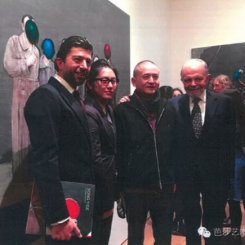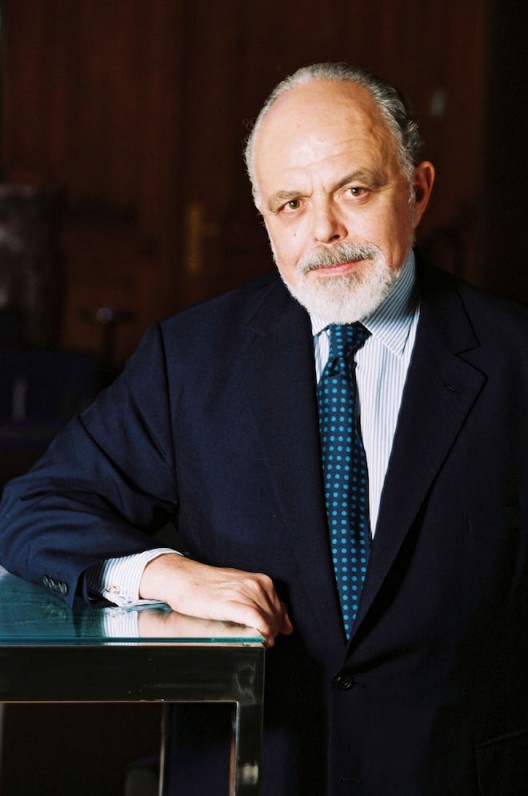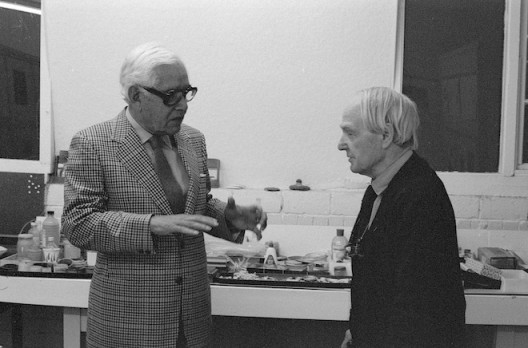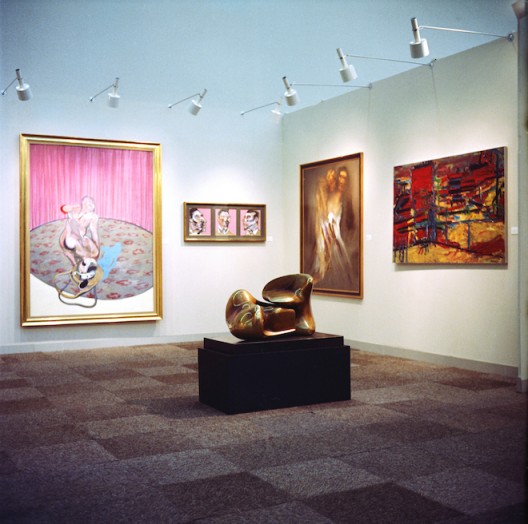Interview with Gilbert Lloyd
燃点全球 Ran Dian Global
Marlborough Galleries, founded in London in 1946, was the first modern International gallery, opening in Rome in 1962 and in New York in 1963, followed by other cities around the world, becoming the prototype for all subsequent international galleries. Ran Dian spoke with Gilbert Lloyd, son of founder Frank Lloyd and managing director of Marlborough from 1972 until 1991, about the gallery’s long history and its involvement with China and its artists.
Marlborough Galleries
ART021 Shanghai 9-12 November
Booth E01
ARTISTS
Chris Moore: You grew up in the milieu of the gallery business, of artists such as Francis Bacon (1909–1992), Henry Moore (1898–1986) and Jackson Pollock (1912–1956). What was that like?
Gilbert Lloyd: Of course, Jackson Pollock was dead by the time I joined the gallery business but I had an excellent contact with his widow Lee Krasner (1908–1984). Quite a few Pollock exhibitions took place because of this, including an important exhibition in our London Gallery in 1964.
CM: Lee didn’t really get the recognition in her lifetime that she deserved, did she?
GL: No, as she was active in a still male-dominated world. The art world tended to pigeonhole her as Pollock’s wife—later widow. We did our best to counteract this and showed her regularly at Marlborough New York in 1968, 1969, 1973 and 1975.
CM: Bacon did get recognition though!
GL: Francis Bacon was unique. He did not suffer fools gladly! He signed an exclusive worldwide contract with us in October 1958 and remained with the gallery until he died in 1992.
We used to go drinking—only the best champagne and Chateau Pétrus for dinner—in Soho, usually at Muriel Belcher’s Club but after a while I had to stop this because I could not handle the hangovers and start work at nine-thirty the next morning. Francis, of course, was wide awake at 7 am and used to ring me, waking me up from my alcoholic slumber!
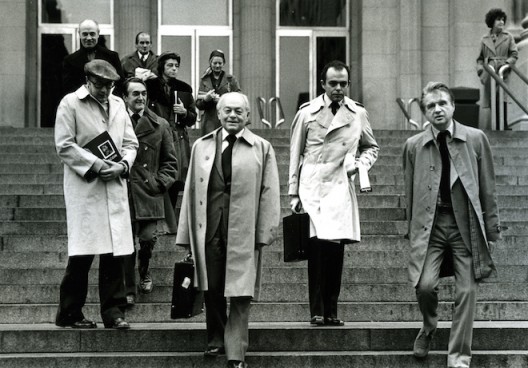
Frank Lloyd, Gilbert Lloyd with Francis Bacon at the Metropolitan Museum of Art, New York, 1975. Copyright Marlborough Fine Art
On the serious side, he was completely professional with regards to his art. When I joined the gallery in 1963, at the beginning of his career, Francis’s work was extremely difficult to sell, as the “Ecole de Paris” (1) was the flavor at the time. Francis’s tough figurative pictures were totally out of fashion and we used to celebrate for a week when we sold a painting.
The first all-important Museum Exhibition was at the Tate Gallery, London in 1962, followed by several shows in our galleries, leading dealer galleries organized by us, and other museums. However, the true turning point in his career came in 1971 when the Grand Palais Retrospective took place in Paris. (2) An example of Francis’s professional side is that when an American collector refused to lend his important “Study of Red Pope 1962” to this major exhibition, Francis said, ‘No problem’ and painted a second version. It took him three days and three nights!
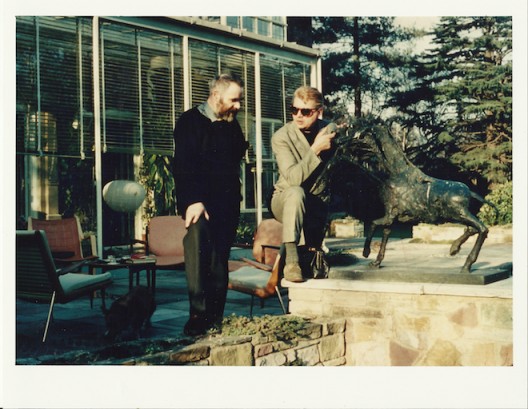
Victor Pasmore and Francis Bacon by a Germaine Richier sculpture at the Lloyd residence, London, c 1958-65 Photo by Gilbert Lloyd, Copyright Marlborough Fine Art
CM: What about Henry Moore?
GL: Henry Moore was a great friend of mine. He was always extremely charming and never lost his temper, unlike other artists! We went to Berlin where I was his interpreter. Through my introduction, Henry started casting his bronzes with the Hermann Noack Foundry. After finishing work at Noack, Henry loved to drink Scotch whiskey in the evenings as a nightcap. It was then that Henry “let his hair down” and taught me a lot about sculpture and the art world.
Henry’s first exhibition with us was in 1961 and we became Henry’s main dealers. Interestingly he was very proud of being the largest individual tax payer in the UK. Henry was always very generous to his dealers. This was very clever as we all worked twice as hard to disseminate his sculpture worldwide.
CM: Besides Francis Bacon and Henry Moore, who were the artists who shaped your aesthetic and critical taste?
GL: I was privileged to meet the American sculptor David Smith (1906-1965) whose work, especially the “Cubi Series”, I found to be the greatest American sculpture in the post-World War Two art world. Another great American artist I looked after was Richard Diebenkorn (1922-1993), whose first London show I organized in 1973.
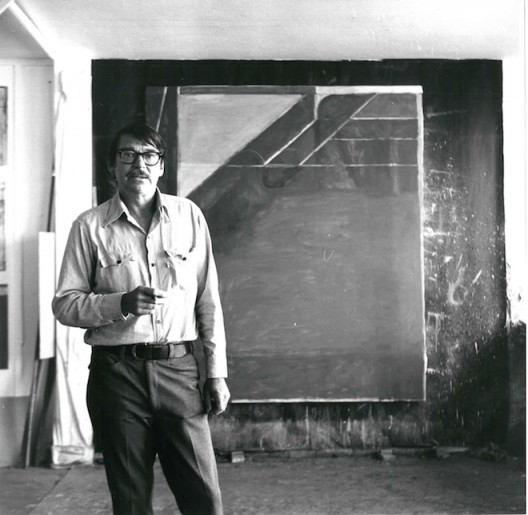
Richard Diebenkorn at his studio in Santa Monica 1972. Photo Gilbert Lloyd. Copyright Marlborough Fine Art
Diebenkorn, by the way, had a very bad temper, but this only exploded rarely. One occasion took place in Zurich at the famous Kronenhalle Restaurant. His 1973 London exhibition traveled to our gallery in Zurich, opening there in February 1974. Diebenkorn was uncomfortable in a country where he could not speak the language. He was particularly worried about getting a bad reception in an environment which he did not know. Hulda Zumsteg, the lady who owned and ran the restaurant came to our table with her “Golden Book”—as she called it. This contained color and pencil sketches and autographs by such artists as Braque, Chagall, Giacometti, to name a few. She asked Diebenkorn to produce a sketch and sign it. Diebenkorn was totally upset by then! He took his glass of red wine and poured it on the empty page in the book…I immediately jumped up and mopped the red wine off the book but unfortunately the page on which it landed had turned pink. As far as I know it is still pink!
All the artists that I met shaped my aesthetic and critical taste. However, the work of Kurt Schwitters (1887-1948) was my personal love. Schwitters died in January 1948 in exile in England having escaped from the Nazis in Germany. He was rediscovered by the late Werner Schmalenbach [an art historian] who organized the first important Schwitters retrospective exhibition at the Kestner Gesallschaft in Hannover in 1956. Ernst, Kurt’s son, came to see me soon after I joined the gallery in 1963 and suggested we work together to promote his father’s art. Well, I jumped at the opportunity! And organized many museum and gallery shows until Ernst’s death in 1996. Ernst used to quote his father and one of his favorite quotes was: “If God can make man out of clay, I can make art out of trash”.
Although I never met Kurt Schwitters, his art was a profound influence on me.
CM: We briefly discussed Lee Krasner. What about other women artists?
GL: We are proud to represent the most important living figurative British artist, Paula Rego (1935–). We also represent Beverly Pepper (1922–), one of the leading US sculptors, and the late world famous Polish sculptor Magdalena Abakanowicz (1935–2017) and Barbara Hepworth (1903–1975) during their life-times, to name a few.
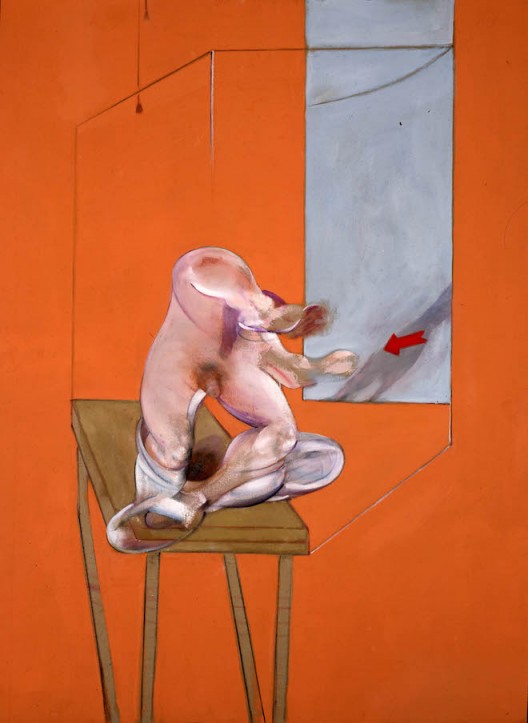
Francis Bacon, Study from the Human Body – Figure in Movement, 1982, oil on canvas, 198 x 147.5 cm (image courtesy the artist’s Estate and Marlborough Fine Art)
GALLERY
CM: Did you always intend to join the family business?
GL: Certainly not! I did not fancy working for my father. Instead I wanted to become a Texan Oil Man, so I worked on an offshore oil rig in the Gulf of Mexico for about a year. We had three weeks on the rig and one week off the rig in New Orleans, which was then the true jazz center of the world and unspoilt by tourism. In the end my father came to see me in New Orleans and made me an offer I could not refuse. So I returned to London and studied art history at the Courtauld Institute of Art, which was part of London University. I joined the Gallery in 1963. I was 23 years old.
CM: How did you grow into the role of gallerist?
GL: I absolutely hate the label “gallerist”. I consider myself an art dealer. And yes, I did grow into being an art dealer. The high points have always been for me that one is surrounded by slightly mad but highly gifted people. Every day is different. Unless one is a total fool, one can make money.
During the 1970s and 1980s, Gilbert was involved in organizing many private and public exhibitions, notably including Homage to Kokoschka, for his 80th birthday, March–April 1966; René Magritte Retrospective in October–November 1973; Max Beckmann, November 1974; R.B. Kitaj, April–June 1977; Henri Matisse, June–July 1977; Egon Schiele, an exhibition of water colors and drawings, 1979; Kurt Schwitters in Exile–the Late Work 1937–1948, October 1981; Francis Bacon Retrospective, starting at the Tate Gallery, London, May–August 1985, and traveled to the Staatsgalerie Stuttgart, October 1985–January 1986, and Berlin’s Neue Nationalgalerie, February–March 1986; and Chen Yifei Retrospective at the Shanghai Museum in December 1996–January 1997, which traveled to the China National Museum of Fine Arts in Beijing, from February–March 1997.
CHINA
CM: What was Marlborough’s first exhibition of Chinese work?
GL: In October–November 1953 we exhibited paintings by Professor Chao Shao-An (1995–1998) and his pupil, Lydia Chao Ling-Fang [Fang Zhaoling (1914–2006), mother of prominent Hong Kong politician Anson Chan, former Chief Secretary]. Whilst I was still a schoolboy at the time, I distinctly remember seeing the exhibition and being very impressed by the beautiful paintings.
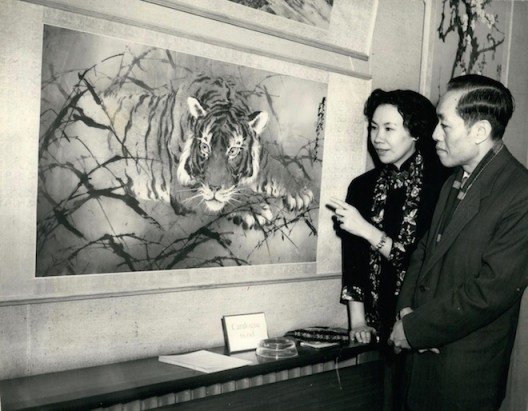
Professor Chao Shao-An and Lydia Chao Ling Fang, with ”The Hero in the Wilderness”, Marlborough Gallery, Old Bond Street. (Keystone Pictures USA / Alamy Stock Photo)
CM: How did Lin Show-Yu’s exhibition come about?
Lin Show-Yu (1933–2011)—known as Richard Lin in the West—came to the UK in 1952. In 1965 Lin was teaching at the Ravensbourne College of Art and Design in South London when he came and asked us for an exhibition, which we were happy to give him. We first exhibited his work in a mixed graphics exhibition in 1965 and he had his first one-man exhibition with us in 1966.
CM: So when did you first go to China?
GL: I went to Hong Kong for the first time in about 1965, invited by one of my school friends, Simon Murray. I was immediately impressed by the energy, industry and bonhomie of the people in Hong Kong. The entrepreneurs of Hong Kong did not appreciate the art scene at that time. I believe it was considered rather “frivolous” by the tough businessmen there.
I met David Tang about 15 years later who helped me to discover the greatness of the Chinese people and introduced me to some extremely interesting individuals, like Johnson Chang. (3)
CM: In 1993–94 you held a major exhibition, “New Art from China: Post 1989″. This was very early for exhibitions of contemporary art from China. Why did you organize this exhibition?
GL: The exhibition was my idea. The news that some very creative new artists were working in mainland China since 1979 was becoming more and more apparent. It was held from 7 December 1993 until 12 February 1994 and was curated by Johnson Tsong-zung Chang. (4) It was very carefully researched and included a large number of Chinese artists of which the best-known today are Fang Lijiun (1963-), Liu Xiaodong (1963-), Zhang Xiaogang (1958-), Liu Wei (1965-) and Zeng Fanzhi (1963-). It was the first major dealer exhibition for these artists in Europe and the USA. I first met Zeng Fanzhi when he came to one of my stands in an art fair in Europe and was interested in the School of London artists I was showing. (5)
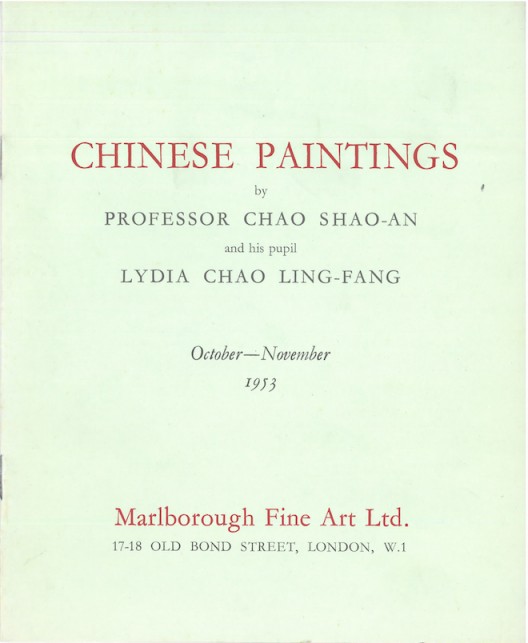
Poster of “Chinese Paintings” exhibition by Professor Chao Shao-an and Lydia Chao Ling-Fang, October-November 1953, Marlborough Fine Art Limited
CM: This was the era of the YBAs. There was enormous growth of interest in England and particularly London in contemporary art. How was “New Art from China” received?
GL: There was an enormous amount of media coverage. All the newspapers covered the show, including the Financial Times and The Guardian. It created quite a buzz!
CM: How did the gallery’s association with China continue to develop?
GL: During our participation at the early art fairs in Hong Kong, in about 1993, Chen Yifei (1946–2005) approached me and asked if I would be interested in representing him exclusively worldwide. Although his art did not fit into the London gallery program very well at the time, the fact that he was the most famous Chinese artist working in Shanghai made his joining the gallery quite imperative. I wanted to keep the contact with mainland China and Hong Kong so we represented Chen Yifei from 1995 until his untimely death in 2005 and thereafter his estate. I started the representation off by putting right the omission of a major retrospective exhibition in China. It was entitled “The Homecoming of Chen Yifei” and was shown at the Shanghai Museum from December 1996 to January 1997 and traveled to the China National Museum of Fine Arts in Beijing from February to March 1997.
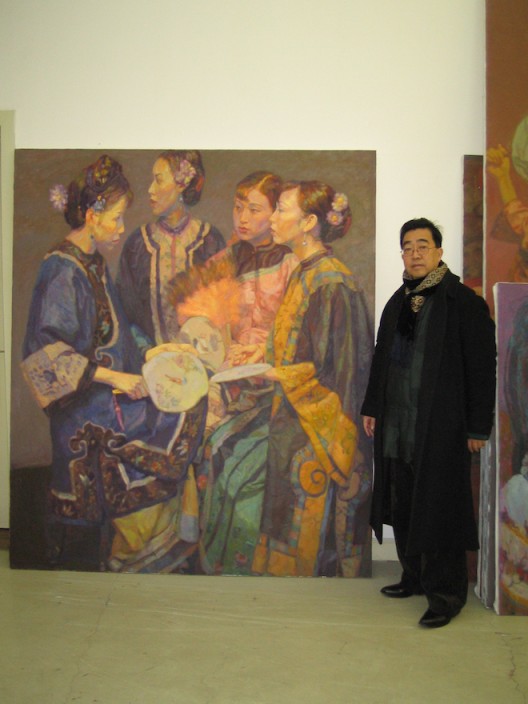
Chen Yifei Photographed in his studio, circa 2002. Photo by Gilbert Lloyd, Copyright Marlborough Fine Art
With this starting point, I organized many exhibitions of Yifei’s work in the various Marlborough Galleries, and in 1997 at the XLVII Venice Biennale in the Pavilion of the People’s Republic of China, and in the small but very important Musée Granet, Aix-en-Provence, the same year.
CM: What was Marlborough’s most recent exhibition involving China?
GL: Our last exhibition involving China was for Song Yige (1980-), held at Marlborough London in 2016. She was introduced to me by Zeng Fanzhi and he also curated the show.
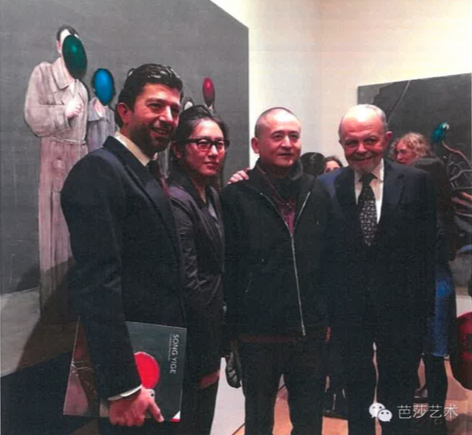
Alex Platon, Song Yige, Zeng Fanzhi and Gilbert Lloyd at opening of Song Yige exhibition at Marlborough Fine Art, January 26, 2016 (image courtesy Song Yige)
CM: Is a new exhibition of art from China in planning?
GL: Marlborough London is participating in Art021 art fair in Shanghai this November and we will have a good exhibition of Chinese artists on the stand, including Zao Wou Ki (1920–2013) and Chu Teh Chen (1920–2014). After the VIP days, I will use my time in Shanghai to visit artist’s studios and hopefully plan a new exhibition for the London gallery!
INTERNATIONAL
CM: What was the motivation for setting up Marlborough Contemporary? How is it different from Marlborough Fine Art?
From the beginning of the Gallery’s activities, we have been interested in, and furthered, contemporary art. In March 1961, we opened the new London gallery at 17/18 Old Bond Street, which specialized in contemporary art of the day. Similarly, and for the same reasons, we opened Marlborough Contemporary London, an off-shoot of Marlborough Contemporary New York, under the Directorship of my nephew, Max Levai.
CM: How does Marlborough balance being both a major secondary dealer and also a primary market gallery?
GL: The separation of primary and secondary market has always been tenuous. As far as Marlborough is concerned, secondary and primary are of equal importance. A large portion of the profits made in the secondary market are ploughed back into our representation of living artists in the primary market.
CM: What was the most difficult period you had to deal with’?
GL: The Rothko lawsuit was very trying. It took place over forty years ago and justice was done. I, myself was not involved at all as I was Managing Director of Marlborough London and fully occupied with my duties in London.
CM: Marlborough’s business stretches around the world. How is its international network managed on a day to day basis?
GL: Marlborough has two galleries in New York, two galleries housed together in London, and galleries in Madrid and Barcelona. My cousin, Pierre Levai, is President of Marlborough New York. As his mother was Spanish, he is fluent in that language and so he also runs the two galleries in Spain.
The London gallery is run by my team. The Chairman is John Erle-Drax, and the Managing Director is Geoffrey Parton. Both joined the Gallery in the mid 1960’s.
Information is exchanged between Marlborough New York—and by extension the two Spanish galleries—and Marlborough London on a daily basis. International Board Meetings are organized at least twice a year.
CM: International art fairs are now a key part of the business of most serious galleries. What were the first art fairs in which Marlborough participated?
The first art fair in which Marlborough participated was the first Basel Art Fair in 1970. It was modeled on the Cologne Art Fair, which started a few years before. Art Basel was started by a group of Basel dealers headed by the late, world-famous dealer Ernst Beyeler. For a long time, the Basel Art Fair had the nick-name “Beyeler Art Fair”.
CM: When did Marlborough first begin participating in art fairs in China?
Marlborough first began participating in art fairs in China in Hong Kong in the early 1990s where we participated in three fairs which were organized by the American entrepreneur Dick Lester. Then we went on to do Art Basel Hong Kong. ART021 Shanghai is the first fair in which we are participating in mainland China. We are greatly looking forward to this art fair and developing and deepening our historic relationship with China further.
THE MARKET
CM: The art market is a vastly different beast now to what it was in the 60s and 70s. What has changed for the better, and what for the worse?
GL: In the 1960s the center of the art world was Paris, then London and New York. There were a handful of dealers in each of these cities, the auction houses were rather dormant and mainly catered to dealers. Private clients usually did not buy at the auctions, but commissioned a dealer to act for them. The art world was a very genteel place, collectors bought because they loved paintings and did not think about them as investments to flip them after only owning them a few months to make a quick buck. We all know what the art market is now, it is no longer genteel, it is a frenetic madhouse which produces good and bad results.
CM: What would you like to see change?
GL: I would like to see an art market that gives collectors and public institutions pleasure acquiring works of art. “Trophy hunting” to get deals that are supposed to produce a quick return will stop when the market does not tolerate them anymore and this would be a good thing.
CM: Do you see risks ahead for the art market?
GL: In general terms, if one bought an Arles period Van Gogh in 1950 it would now be worth several thousand percent more than one paid for it originally. As with all investments there have been ups and downs but I do not know any investments that have gone up in value so much. Speaking frankly, this augurs well for the future.
CM: How will Brexit affect the art market and will it have an impact on Marlborough?
GL: We are cautiously optimistic. Brexit is the result of a referendum. We live in a democracy and we must hope for the best. Marlborough’s clientele is worldwide.
Notes
Marlborough Fine Art was founded in London in 1946 by Frank Lloyd and Harry Fischer. The New York gallery followed in 1963. Marlborough Contemporary opened in 2012 in New York, followed by Marlborough Contemporary London in 2012. In Europe, Marlborough also has galleries in Madrid and Barcelona.
1. The Ecole de Paris was not so much a school as a catch-all term for local and often émigré modernists who emerged between the wars and came to public prominence after the Second World War, including abstract artists such as Bram van Velde, Roger Bissière, Serge Poliakoff, Pierre Soulages, and Alfred Manessien.
2. Francis Bacon, Galleries nationales du Grand Palais, 26 October 1971–10 January 1972, comprising 108 pictures.
3. Sir David Wing-Cheung Tang (1954–2017), businessman, collector, philanthropist, and noted bon vivant. Tang founded the China Club in Hong Kong, where he famously displayed his art collection, and the Shanghai Tang fashion house.
4. School of London was a term invented by the American artist R.B. Kitaj (1932–2007) for the exhibition “The Human Clay” at the Hayward Gallery in 1976, to describe a loose group of artist in London who were pursuing figurative painting against other avant-garde movements of the time, including abstraction, conceptualism and minimalism. London School artists included Frank Auerbach (1931-), Francis Bacon, Lucian Freud (1922–2011), David Hockney (1937-), Howard Hodgkin (1932–2017), Leon Kossoff (1926-) and Paula Rego.
5. Chang Tsong-zung (Johnson Chang), (1951-) is a curator and gallerist. Chang is the founder of Hanart TZ gallery in Hong Kong (1983-), and co-founder with Claire Hsu of the Asia Art Archive (AAA) in Hong Kong, as well as guest professor of the China Academy of Art in Hangzhou. The exhibition “China’s New Art Post-1989”, which opened at the Hong Kong Arts Centre in January 1993, was the catalyst for Chang and Lloyd’s ‘New Art from China: Post 1989’ show in London.

